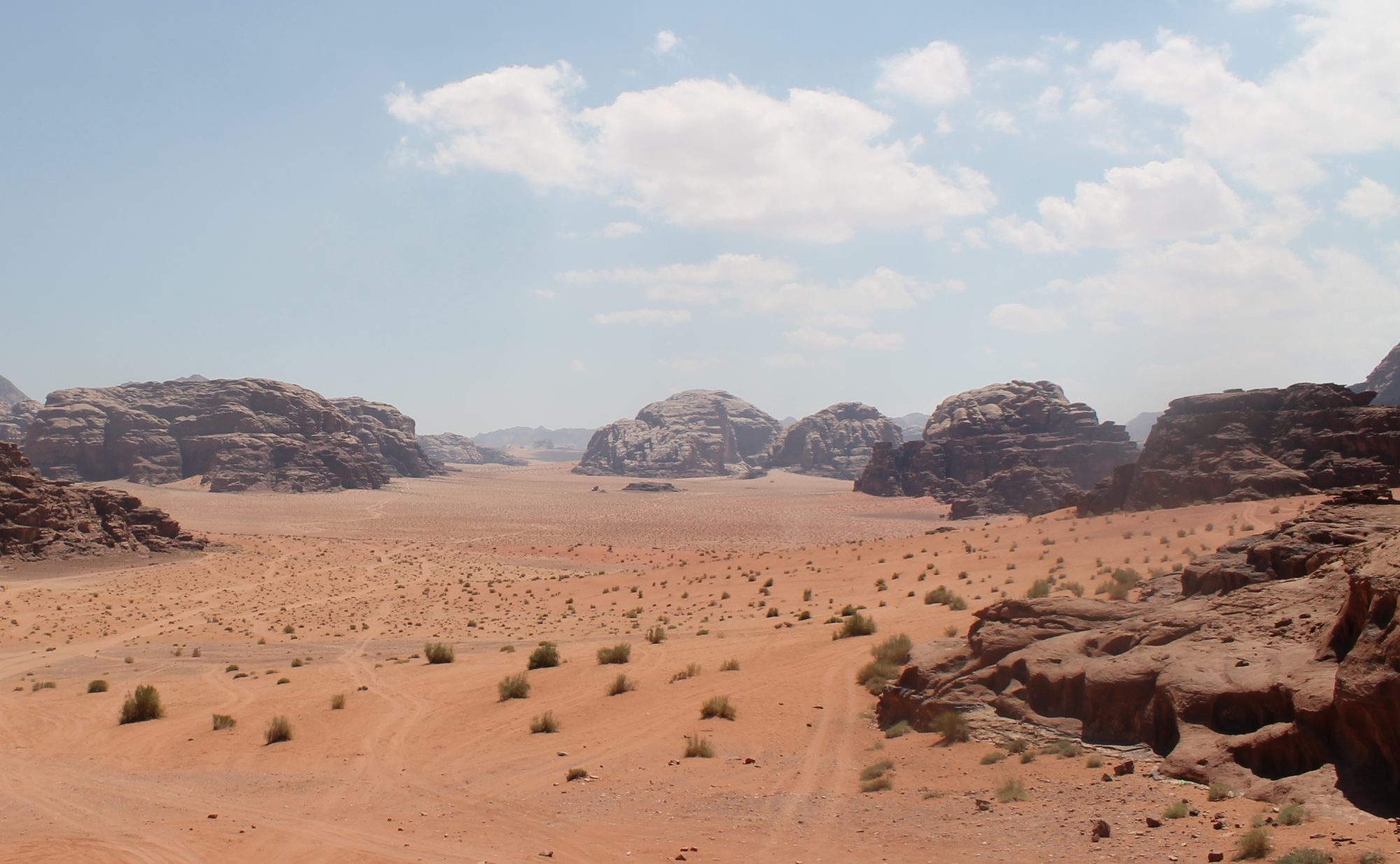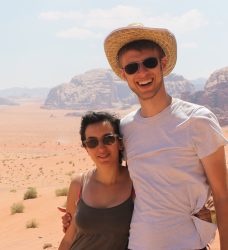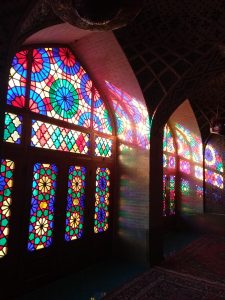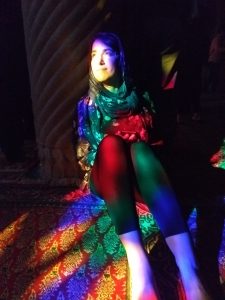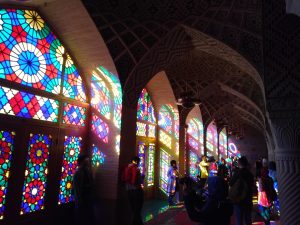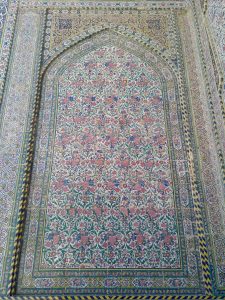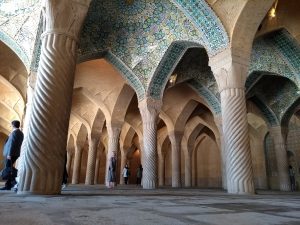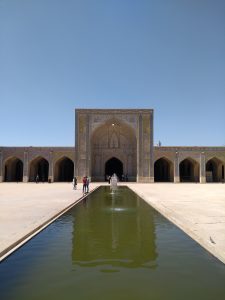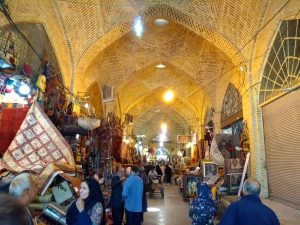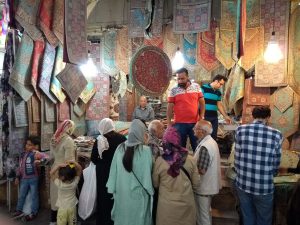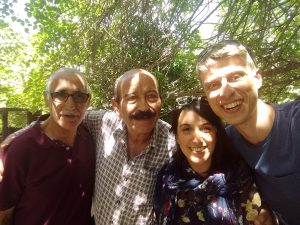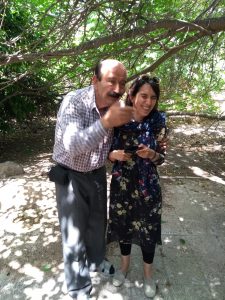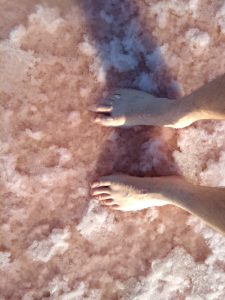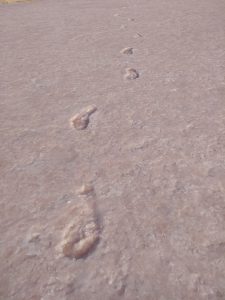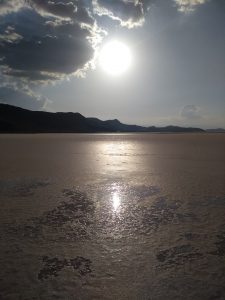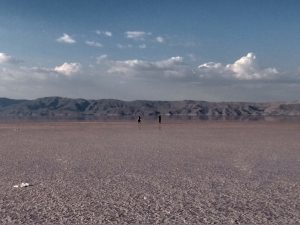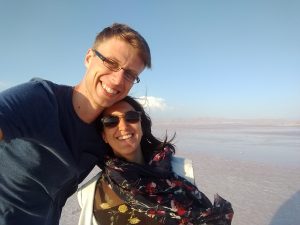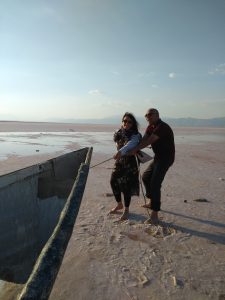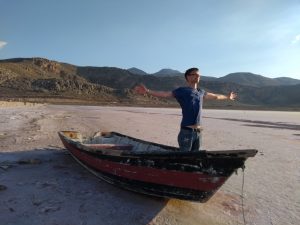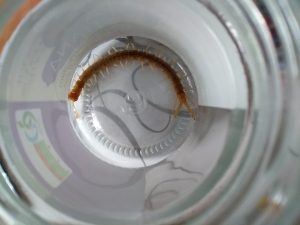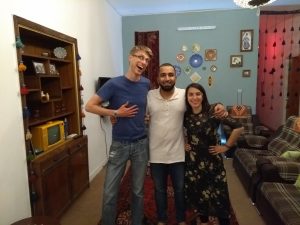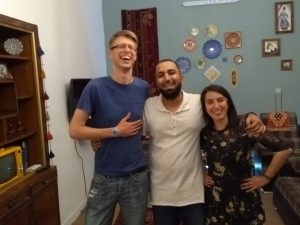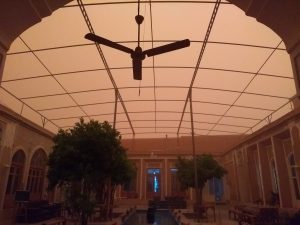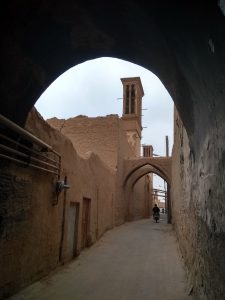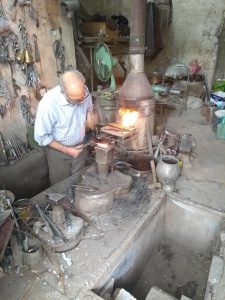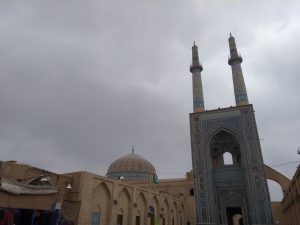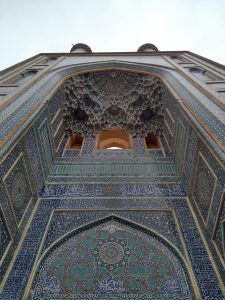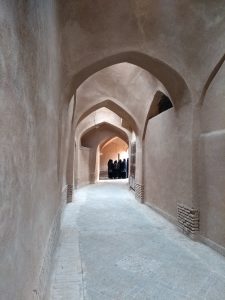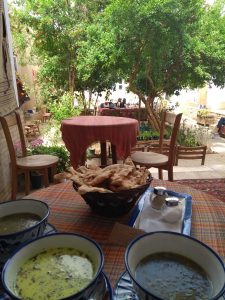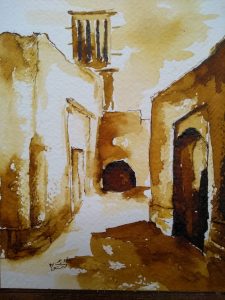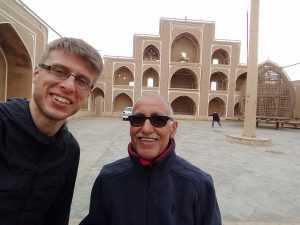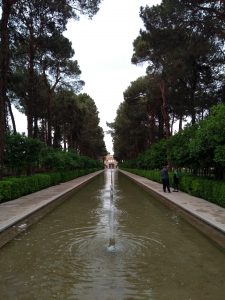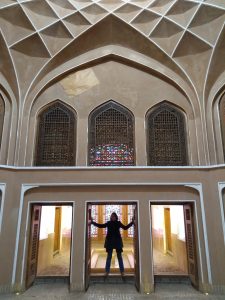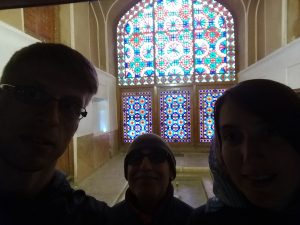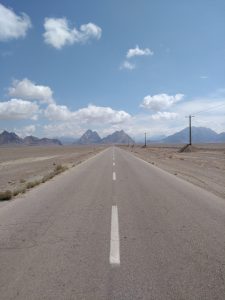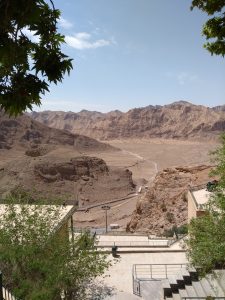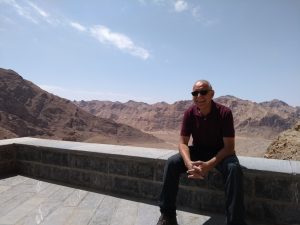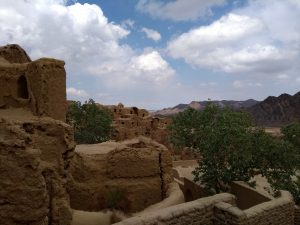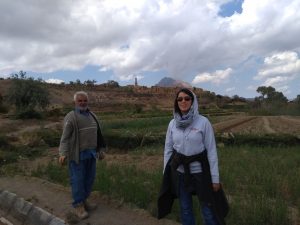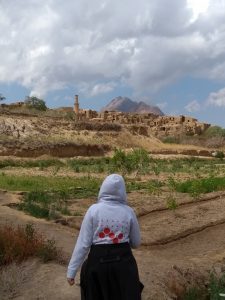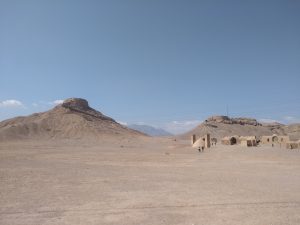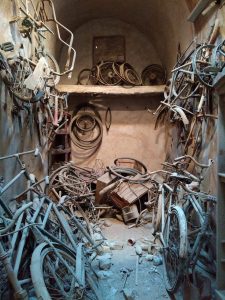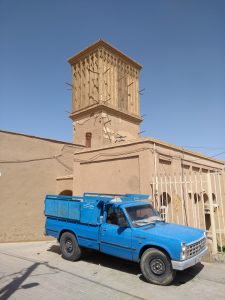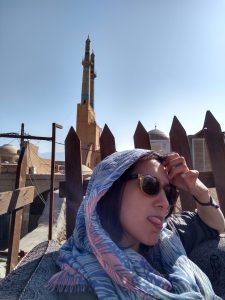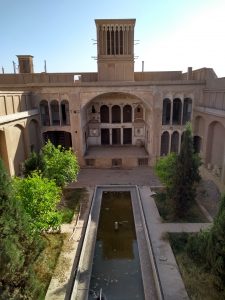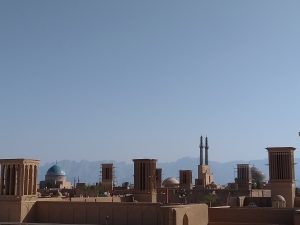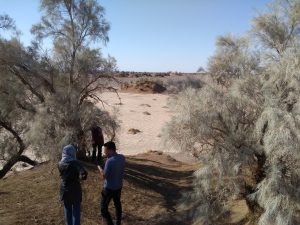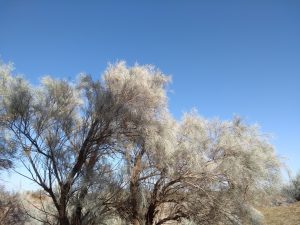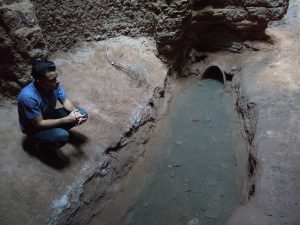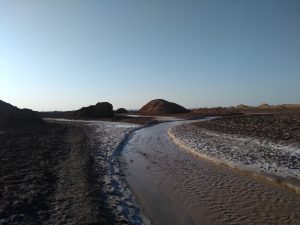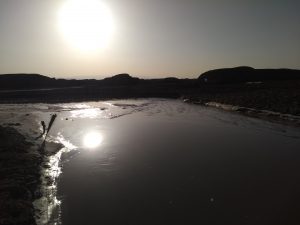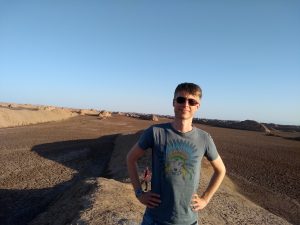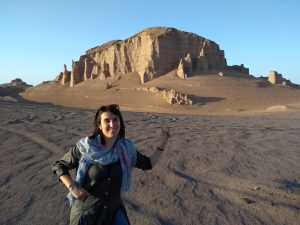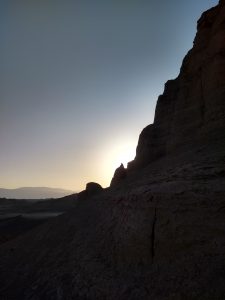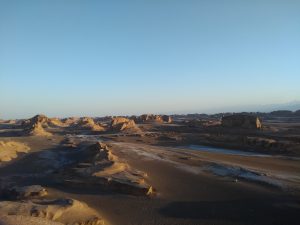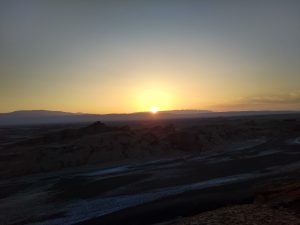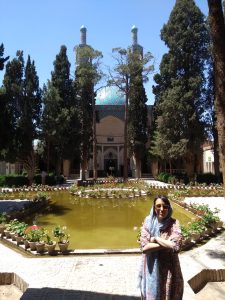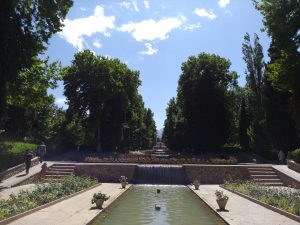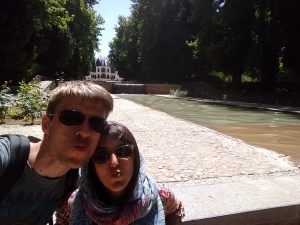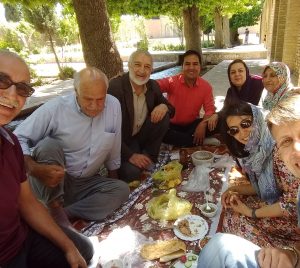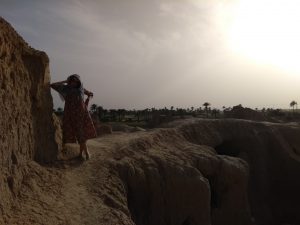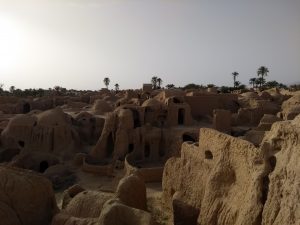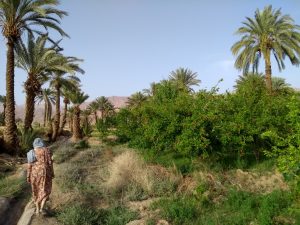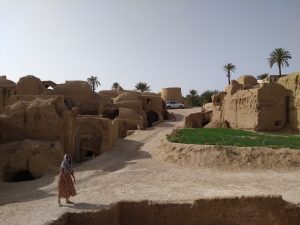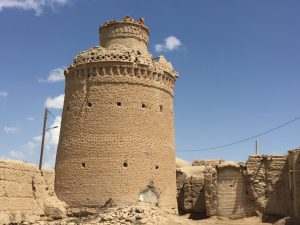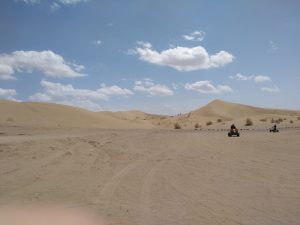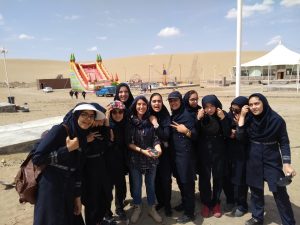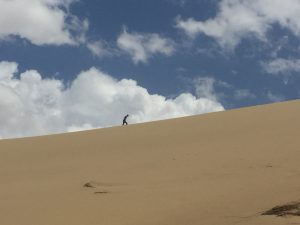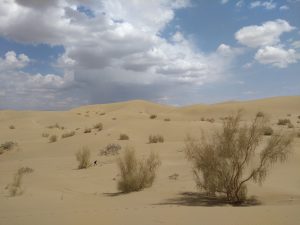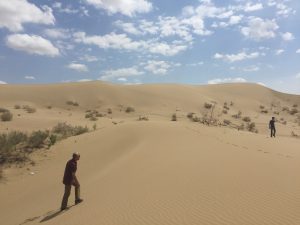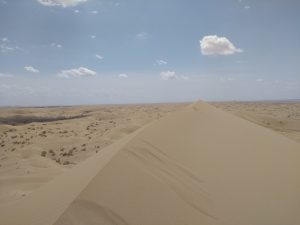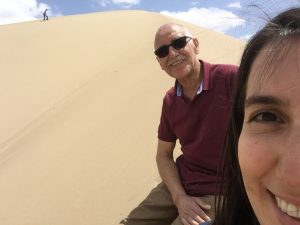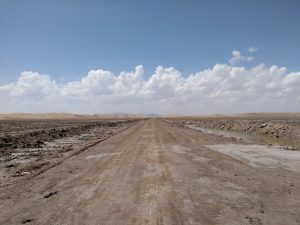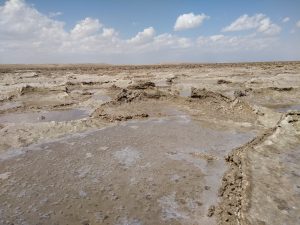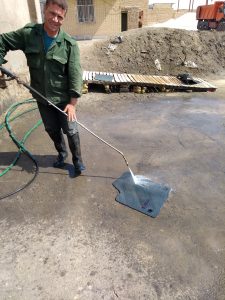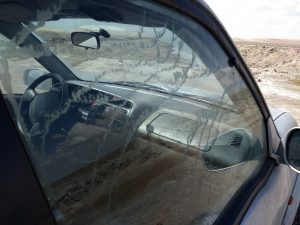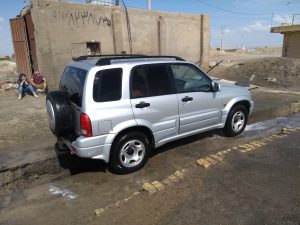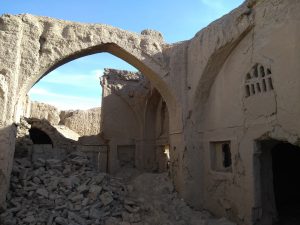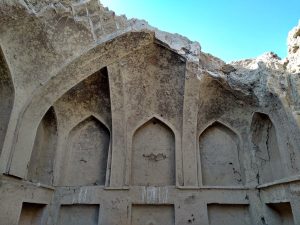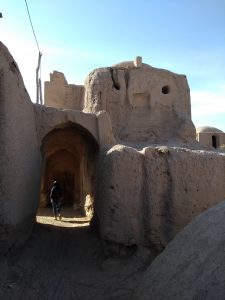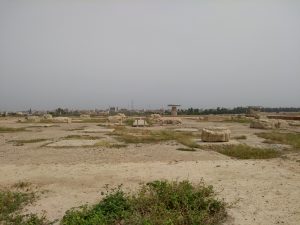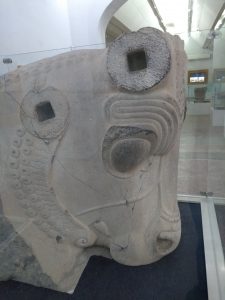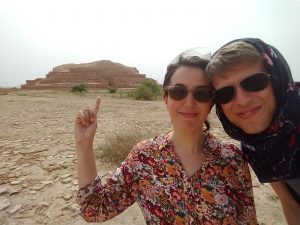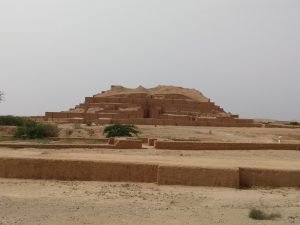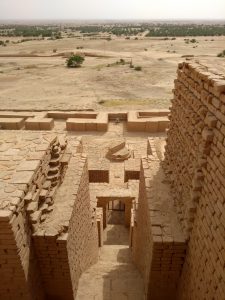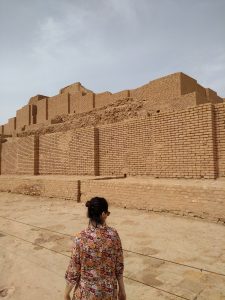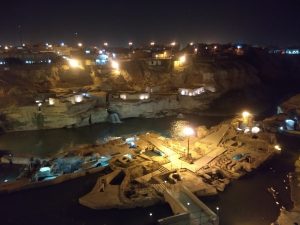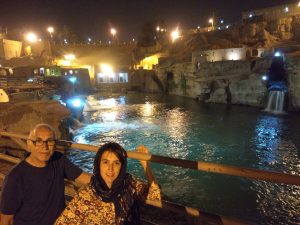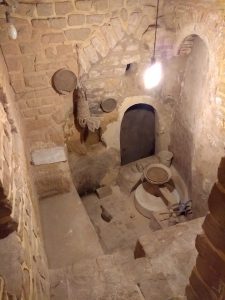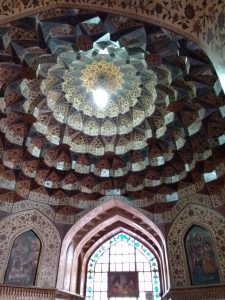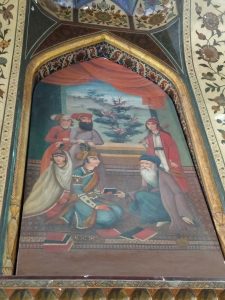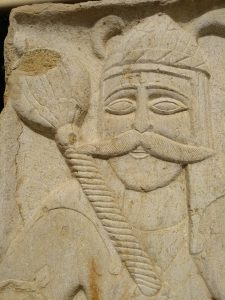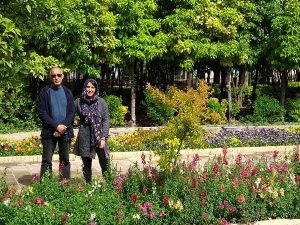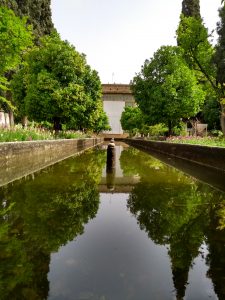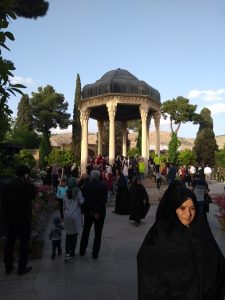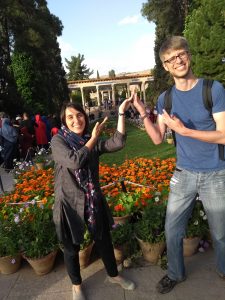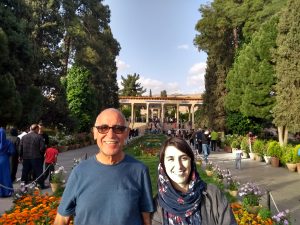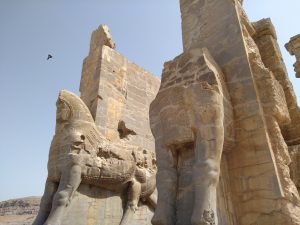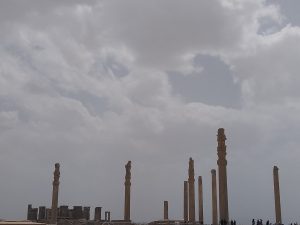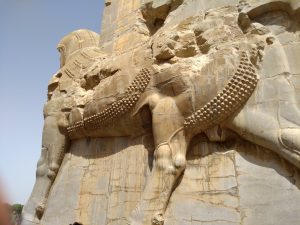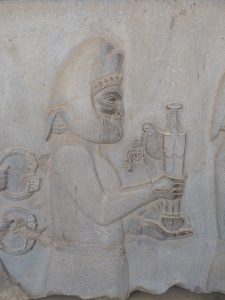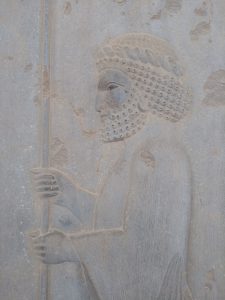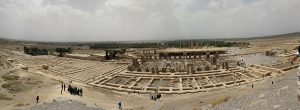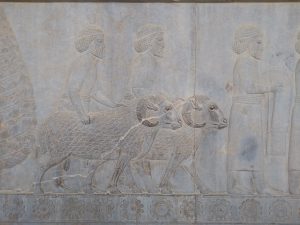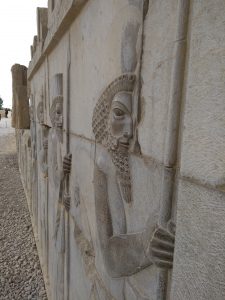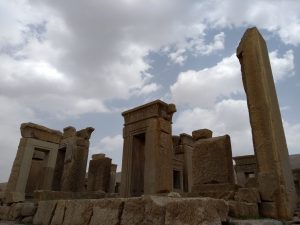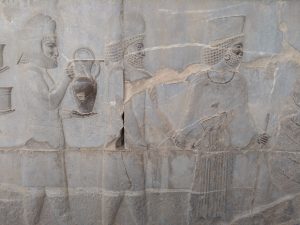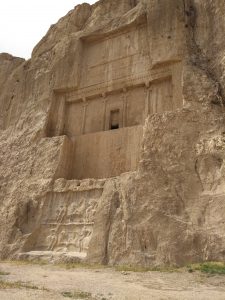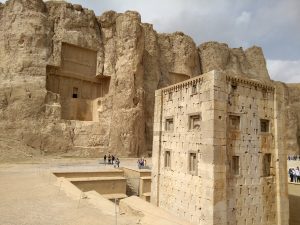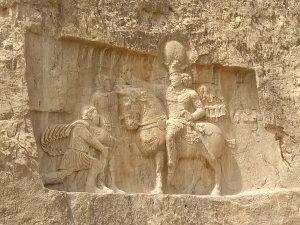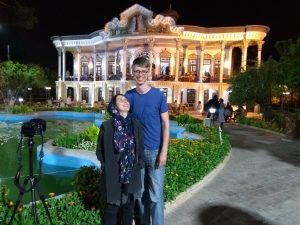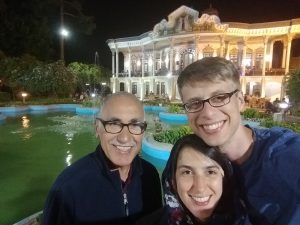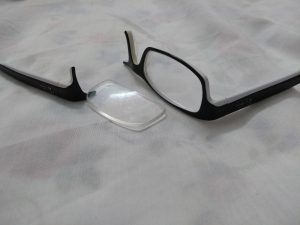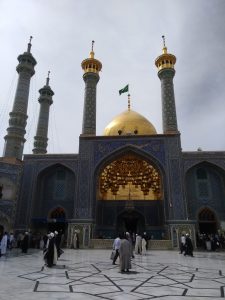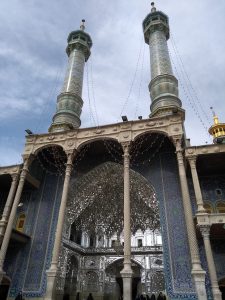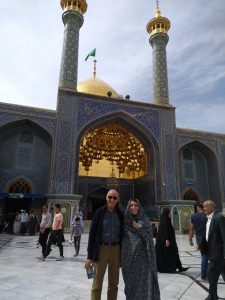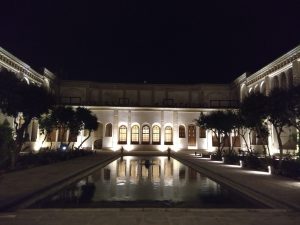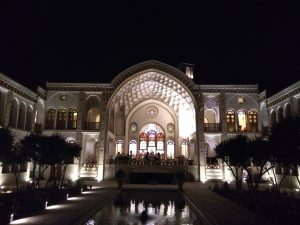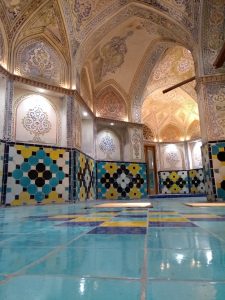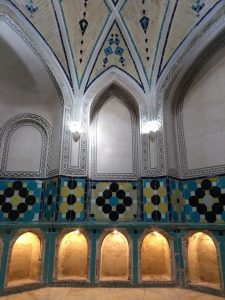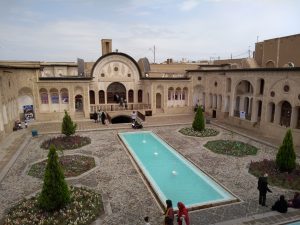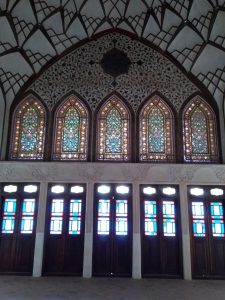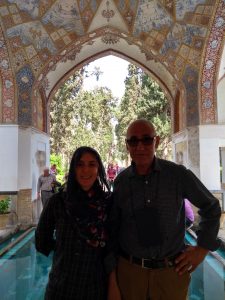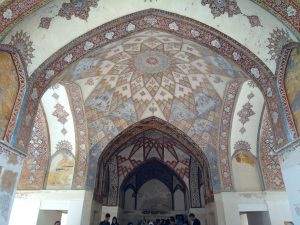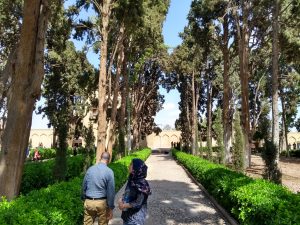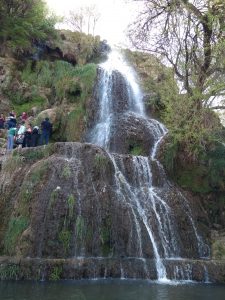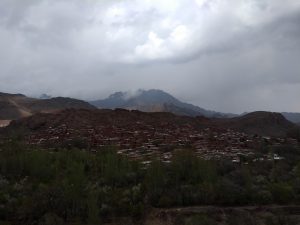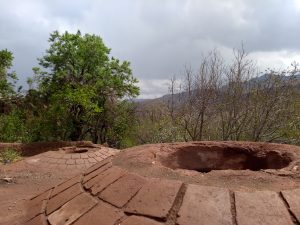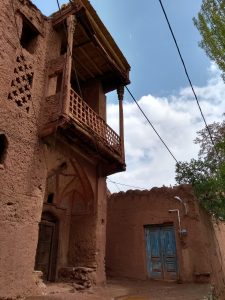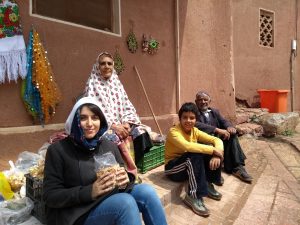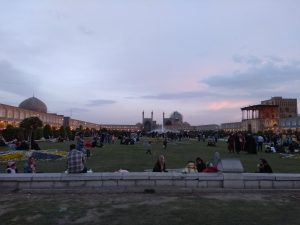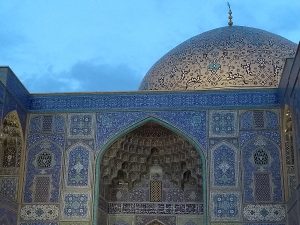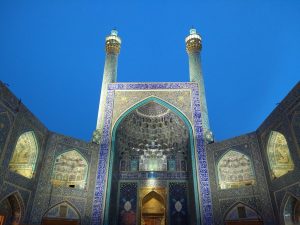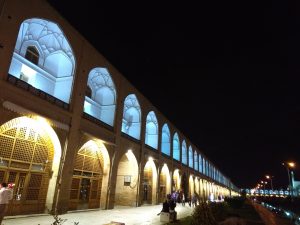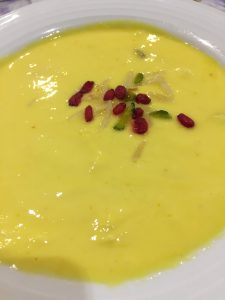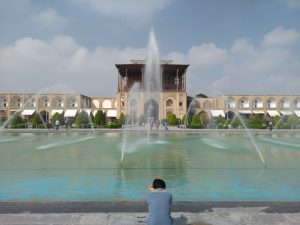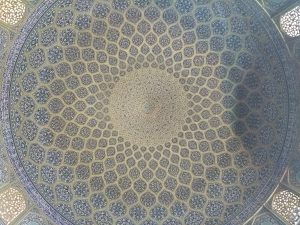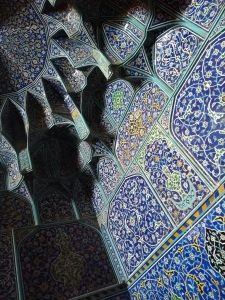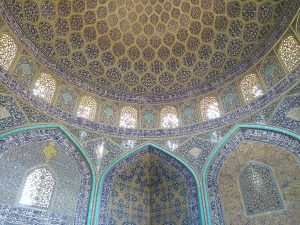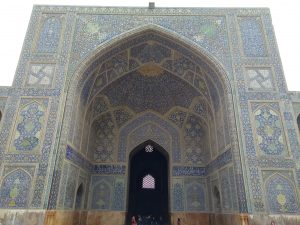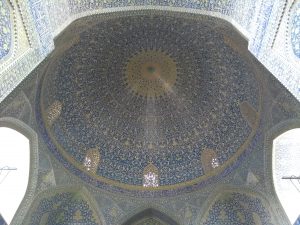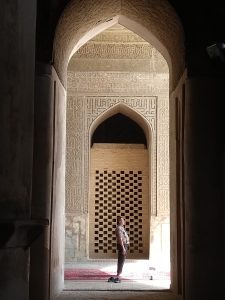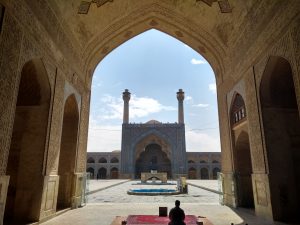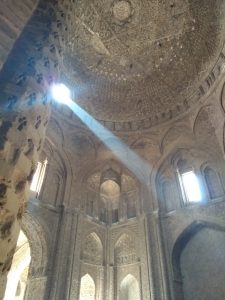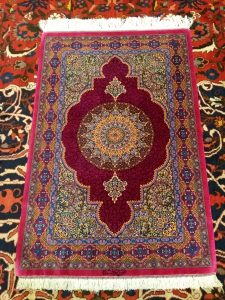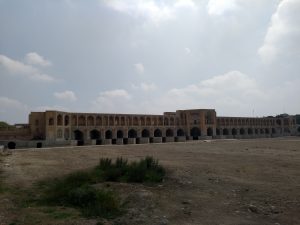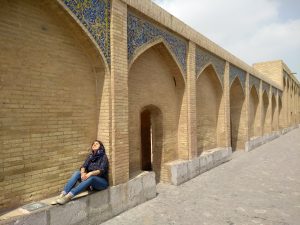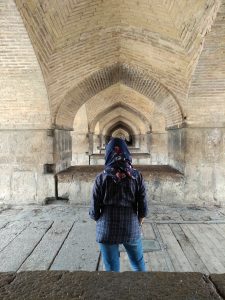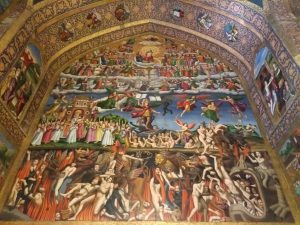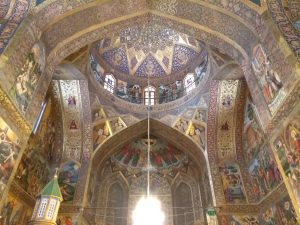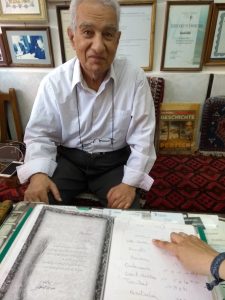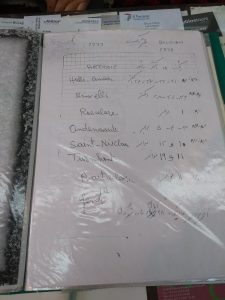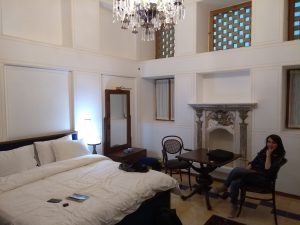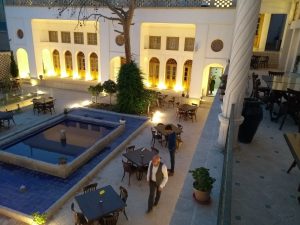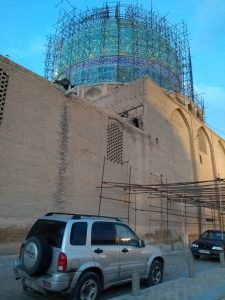Sunday, the 23rd of April
After spending the night in an Esfahak ecolodge, Moshin showed us around. His background is in IT, but he decided to quit his job and return to his home village, and help develop it. Doing a pretty good job as well, if you ask us.
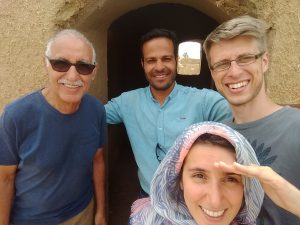
Next we set out to the Mortazeh Ali spring, near Tabas. We thought we were really going off the beaten track, given the remoteness of the region. Hiking through the riverbed, we soon ran into a couple of Belgians though… Still, the surroundings were beautiful:
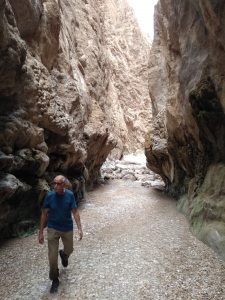
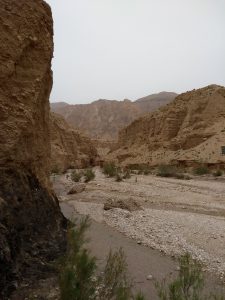
Afterwards, a 600 km trek towards Mashhad, in the north east of Iran. Lots of desert. The weather was quite strange: lots of sand in the air, but no real sandstorm. Combined with a few raindrops, this ensured very low visibility unless we constantly kept spraying the windows.
Monday, the 24th of April
After a very short night of sleep for Tom (which caused a bit of grumpiness during the day…), we visited Mashhad. Famous for two things: the holiest site for Shia Islam, and saffron. First, we visited the shrine for Imam Reza in the center of town. This turned out to be somewhat of a disappointment: everything about the shrine is quite new (20th century), and it failed to impress us with its grandeur. What we did like:
– The chador Wafa received as a gift:
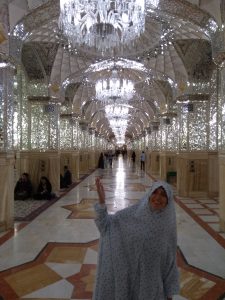
– The obligated talk with an imam. Wafa almost cried laughing when he got confused by the fact we were ‘married’ even though Wafa’s ‘muslim’ and Tom ‘christian’. He promptly tried to convert Tom, of course!
– The carpet museum, part of the shrine complex. Even included one of the German Kaiser, made around the time of WWI, a 100 years ago:
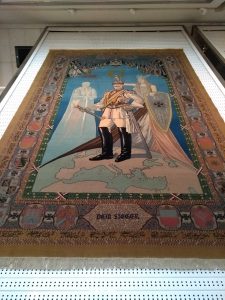
Afterwards, we bought lots of saffron, as Mashhad is supposed to be the capital of saffron. They put it in everything: tea, sugar, rice…
Tuesday, the 25th of April
Nothing much to report, drove 700 km from Mashhad to Semnan. We did see a few warning signs on the road to mind the leopards though. Apparently there’s still a small leopard population remaining in the remote parts of the desert here. Sadly, most of the other big animals have been hunted to extinction a long time ago (lions, bears, all sorts of deer…).
Wednesday, the 26th of April
Drove from Semnan to Tehran Airport. After leaving the car the airport, we took the metro to Tehran itself. Due to the fantastic efficiency of the metro system, this only took us about 3-4 hours. Even though Tehran is a real metropolis (15 million inhabitants!) we still got a lot of curious looks. After another passenger shyly asked us where we were from, we heard the answer whispered around the entire carriage (‘Belgik. Belgik? Belgik!’).
In the rest of Iran, we had been told by youths that Tehran is supposed to be the most liberal city in the country. We could immediately tell by the dress of women: almost no chadors, and even headscarves were worn very loosely.
First thing we did was visit the Azadi tower. This was built in 1975 by the last Shah of Iran, the celebrate a continuous 2500 years of Persian Empire. The feast was so opulent (over a 100 heads of state) that it was actually one of the catalysts that triggered the 1979 Islamic Revolution, which signaled the end of that same Persian Empire:
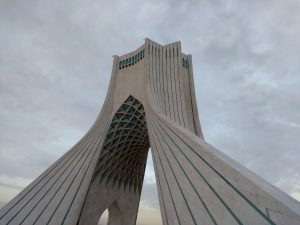
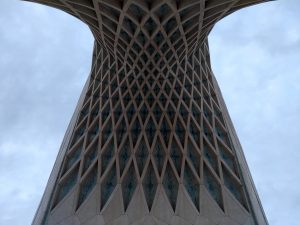
Thursday, the 27th of April
We only had one day in Tehran, so we wanted to make it count. First a visit to the American embassy, which was stormed at the time of the revolution back in 1979. It’s now home to some sort of militant organization that defends the revolution. And the graffiti on the compound walls tell their own story:
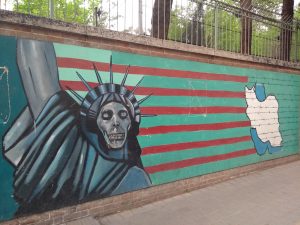
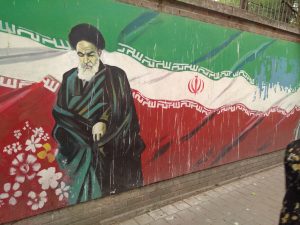
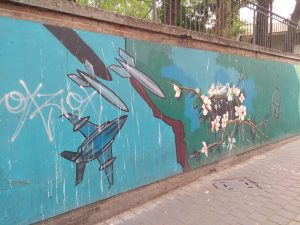
Afterwards we set out to the National Museum. It was really nice to see every period in Iranian history covered here; it enabled us to link up every place we’ve visited so far. And it contained some beautiful artifacts, of course:
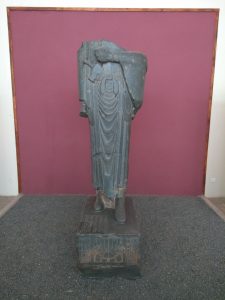
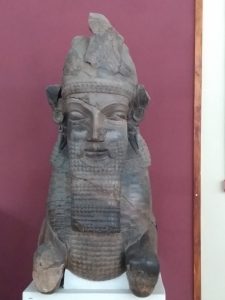
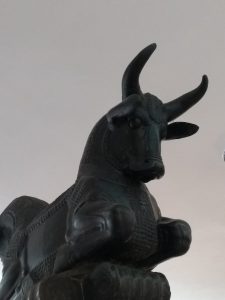
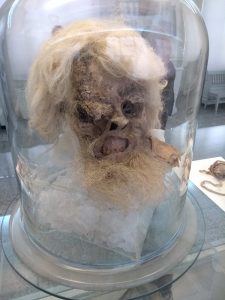
(Lots of stuff from Persepolis. The last dude was found in an ancient salt mine, ‘perfectly’ preserved. Wouldn’t want to meet him in the dark…)
Last item on our list for Tehran: the Golestan palace complex. Built in the 19th century by the Shahs of the Qajar dynasty, these palaces are fabled for their opulence. The Qajar era is generally viewed as one of the worst in Persian history: reduced to a laughing stock, the empire lost a large part of its territory. During our trip, we met a number of people that still speak of a ‘Greater’ Iran, which would contain the Caucasus nations, large parts of Central Asia, Afghanistan… if not for the losses of that time.
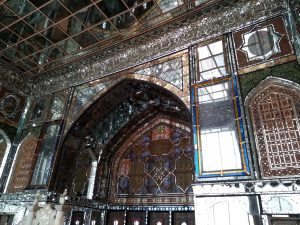
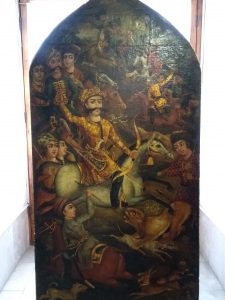
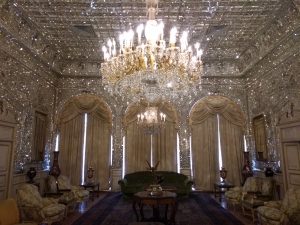
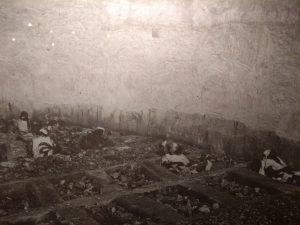
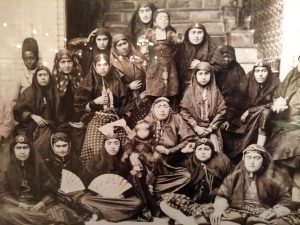
(Also included: a photo exhibition with photos of the private archives of the Shah. The upper one depicts dead bodies in a tower of silence (cf. Zoroasterians – they leave their dead to be eaten by animals). The lower one is the harem of one of the Qajar Shahs. Still going for those unibrows…)
In the evening, we enjoyed our last dinner together with the three of us. We could tell the travelling had worn Abdel out, so it was the right call in the end. Still, it will be different travelling with just the two of us again…
Friday, the 28th of April
Early morning, getting up at 5 AM! After a hearty goodbye to Abdel at Tehran airport (and sticking around for a few hours, to make sure the plane actually took off), we went to pick up the car in the parking lot. The clerk got real confused about our ticket –not supposed to stay for two days?- and we ended up paying just under 1 euro. Eat that, Zaventem!
Afterwards we drove to Qazvin and spent the rest of the day hanging around in the same hotel we stayed in 4 weeks earlier. The hotel staff even recognized us! (As the annoying customers that complained the food was too expensive). We didn’t see the friendly night manager anymore though, that gave us a free upgrade and discount. Hopefully we didn’t get him fired…?
Saturday, the 29th of April
Today we set out to visit Alamut Valley. Like we explained in an earlier post, this valley is most known for being the home base of the Assassins, a cult that specialized in high profile assassinations on command. After we made it all the way up to the main castle, we understood why it took a couple of centuries and the fierceness of the Mongols to root these guys out:
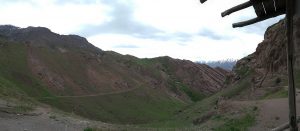
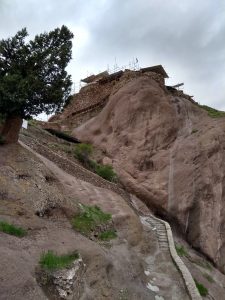

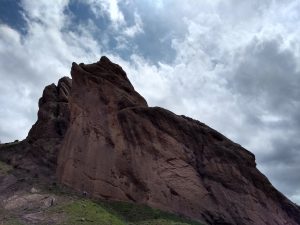
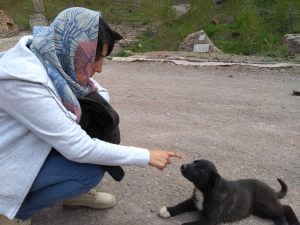
(Wafa touching a dog! Imagine that!)
There was supposed to be a road that took us straight from Alamut Valley to the Caspian Sea. So we left in the early afternoon, heading towards the town of Ramsar. Little did we know that the road would degrade into this:
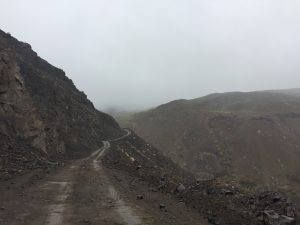
After climbing to around 3000 meters, it even started looking like this:
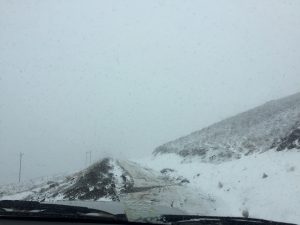
And then it got worse:
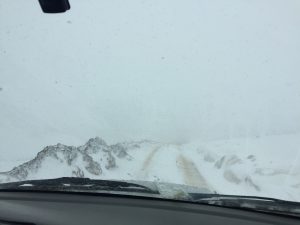
At this point, we thought about turning back: it was snowing, visibility was down to 50 meters, the road was snowed under and the car started slipping every once in a while (and we were driving next to a rather deep ravine). We were shitting bricks by now.
We could see on the GPS there was a provincial border nearby though. Gambling on the fact that borders are usually placed on the highest point of mountain ranges, we decided to drive a little bit further and hope the road would start descending.
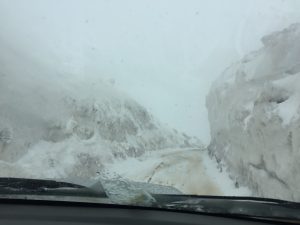
Which it finally did after this point, at over 3300 meters!
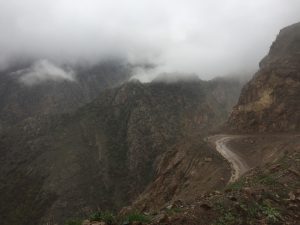
Once we got back down in the valley, another worry: the most annoying shrieking sounded from the right tire in front. It did not sound (& smell) good.
Some friendly Iranians came to the rescue. After taking off the wheel, we saw that a small stone had become lodged between the wheel and braking disc.
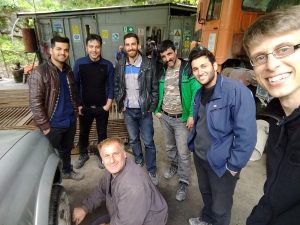
Around 7 PM, we finally arrived in Ramsar. In the end, it took us 5 hours for just 135 kilometers. So we checked into the local luxury hotel and went looking for dinner. We ended up in a coffee shop under the old part of the hotel, where we ran into the manager slash doppelganger of a good friend of ours:
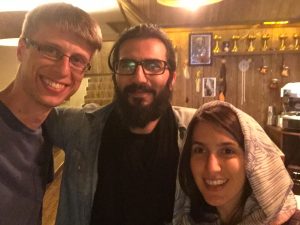
(Meet Iranian Antonio, with beard!)
He told us the hotel used to be the hottest place in town, drawing rich people from Iran and far beyond. Before the revolution, there was a casino and everything. They even had pictures of Frank Sinatra, Al Pacino and Sammy Davis Jr in the hotel on the wall. Pretty weird when you keep in mind the state of things since 1979…
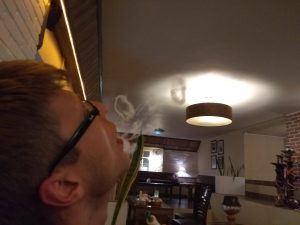
(They also had shisha! Yay for smoke rings!)
Sunday, the 30th of April
After being woken up at 5 AM by a random dude knocking on our door, we first set about writing the post cards we wanted to send out of Iran.
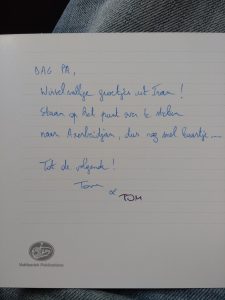
(Wafa got a bit confused.)
Driving towards the Azeri border in Astara, we had a stop at a local heritage museum. This region of Iran, Gilan, has its own culture and customs. Some lovely houses as well:
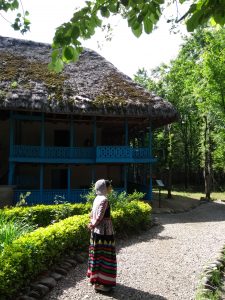
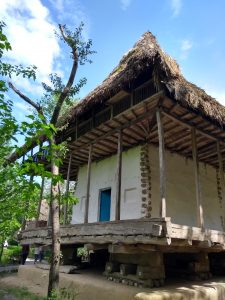
After arriving in Astara, we found a hotel that would give us a room for our last rials and gave us access to the kitchen to cook our own meal. We spent our last evening in Iran talking to the hotel manager, commenting on the state of affairs in the country. His conclusion: Iran good people, bad politics. We couldn’t agree more!
